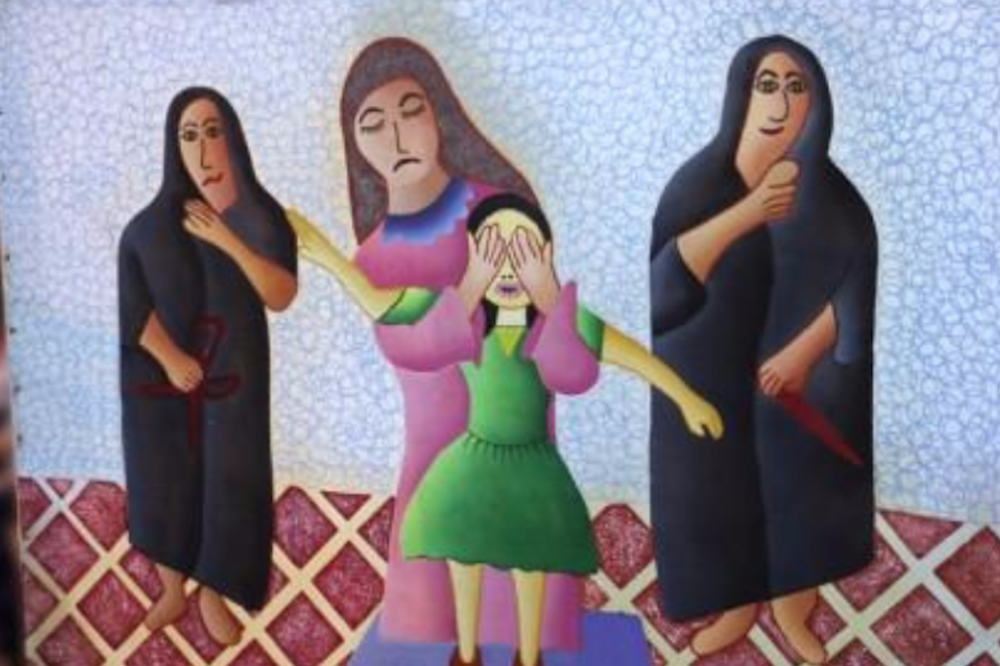Category: Archieve
-

Epidemiology, Regional Characteristics, Knowledge, and Attitude Toward Female Genital Mutilation/Cutting in Southern Iran
Maryam Dehghankhalili, MD,* Soghra Fallahi, MD, Forugh Mahmudi, MD,Fariborz Ghaffarpasand, MD, Mohammad Esmaeil Shahrzad, MD, Mohsen Taghavi, MD, and Marjan Fereydooni Asl, MD *Health Policy Research Center, Shiraz University of Medical Sciences, Shiraz, Iran; Research Center of Molecular Medicine, Hormozgan University of Medical Sciences, Bandar Abbas, Iran; Fertility and Infertility Research Center, Hormozgan University of…
-

we will have meetings with scholars on circumcision of girls
After announcing numerous reports through various associations and publishing materials, finally one of the provincial governors of Hormozgan was well informed: Director General of the Office of Social and Cultural Affairs of Hormozgan Governorate has stated that we will have meetings with scholars on circumcision of girls. Director General of the Office of Social and…
-

Talking to circumcisers in Iran: Kind women, violent tradition
Talking to circumcisers in Iran: Kind women, violent tradition By Rayehe Mozafarian More than 7000 communities across Africa are working to abandon FGM. But there are some other countries in the Middle East and Asia where FGM is also common as a tradition. Despite the efforts of some organizations in the Middle East and Asia…
-

WASTED YOUTH; Children’s Rights in Iran
download the complete report here (pdf, word) to find the resources: INTRODUCTION Iran is a young country, with more than 28 million inhabitants under the age of 18 in 2011. However, the vast potential of this young, bright population is largely being squandered as a result of poor education policies, discriminatory legislation and insufficient child…
-

Sexual Function, Mental Well-being and Quality of Life among Kurdish Circumcised Women in Iran
Farzaneh DANESHKHAH 1, *Hamid ALLAHVERDIPOUR 1, 2, Leila JAHANGIRI 1, Tatiana ANDREEVA 3 of Health Education & Promotion, Tabriz University of Medical Sciences, Tabriz, Iran Clinical Psychiatry Research Center, Tabriz University of Medical Sciences, Tabriz, Iran School of Public Health, National University of Kyiv-Mohyla Academy, Kiev, Ukraine Abstract Background: Female genital mutilation is an intentional…
-

How a religious ruling seems to have stopped FGM in the 1950s in Ahwaz, Iran
Two new studies shed more light on the practice of Female Genital Mutilation (FGM) in the Middle East. For the first time, a study explores whether FGM is practiced in Syria – and comes to the conclusion that no evidence of its existence can be found. Another study explores the history of FGM in the…
-

Survey: Majority of religious leaders pro FGM in Kermansheh, Iran
A recent survey among Sunni religous scholars in the Iranian province of Kermansheh shows that a majority of them (67%) believe that “female circumcision” is religiously obligatory or at least recommended for girls and women. In this province in the West of Iran, female genital mutilation (FGM) is practiced by Sunni Kurds who adhere to…
-

Razor and Tradition, short film about FGM in Iran
Short film of Razor and Tradition was produced by STOP FGM Iran and directed by Rayehe Mozafarian who published the book with the same name and subject. please visit www.stopfgmiran.com in English and Persian
-

Iran: New book about FGM is distributed among health workers
The practice of female genital mutilation (FGM) affects Kurdish women and girls in the Iranian province of Kermanshah and continues within a complex web of social, cultural and economic justification. It is medically unnecessary and has adverse physical, sexual and psychosocial consequences. Many Kurdish health care practitioners have little knowledge or experience of the…
-

Committee on the Rights of the Child, Concluding observations on the combined third and fourth periodic reports of the Islamic Republic of Iran
The Committee considered the combined third and fourth periodic reports of the Islamic Republic of Iran (CRC/C/IRN/3-4) at its 2055th and 2057th meetings (see CRC/C/SR.2055 and 2057), held on 11 and 12 January 2015, and adopted the following concluding observations at its 2104th meeting (see CRC/C/SR.2104), held on 29 January 2016. Download the report here